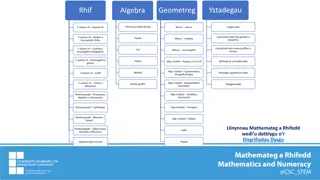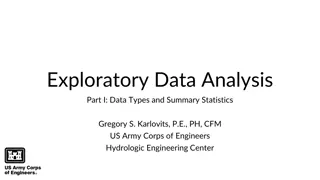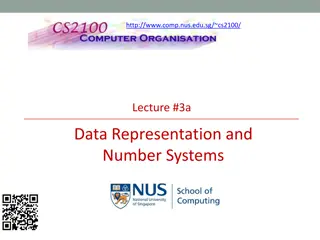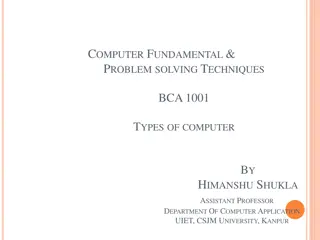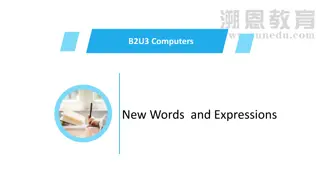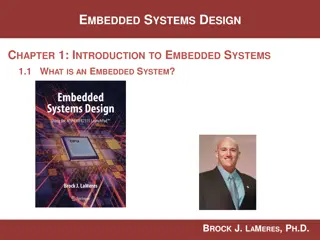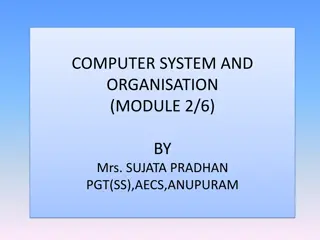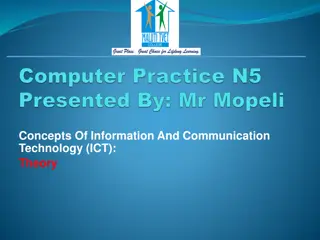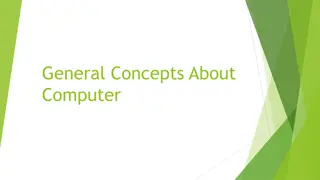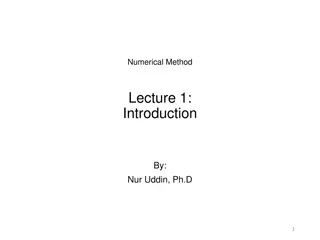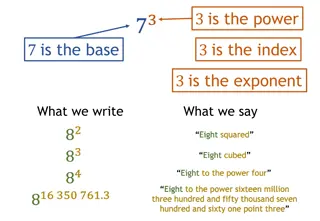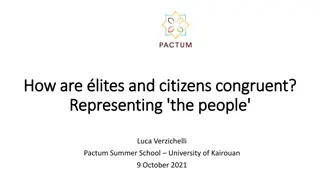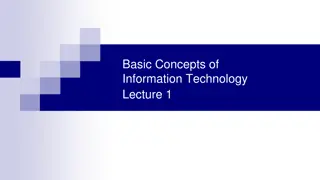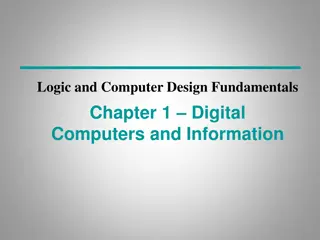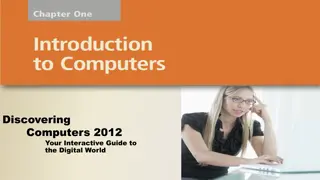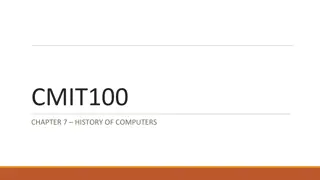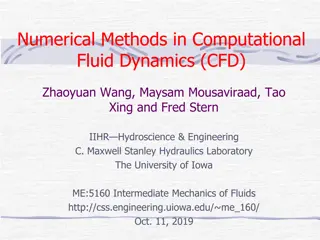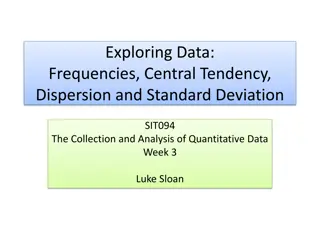Numerical Data Representation in Computers
Computers use zeros and ones exclusively for representing numerical data, which can pose challenges for signed integers and real numbers due to the finite nature of computer representations. Binary-coded decimal (BCD) and signed-magnitude representations are utilized to overcome these limitations. The 9s complement method is also employed for efficiently representing negative values in computer systems.
Download Presentation

Please find below an Image/Link to download the presentation.
The content on the website is provided AS IS for your information and personal use only. It may not be sold, licensed, or shared on other websites without obtaining consent from the author.If you encounter any issues during the download, it is possible that the publisher has removed the file from their server.
You are allowed to download the files provided on this website for personal or commercial use, subject to the condition that they are used lawfully. All files are the property of their respective owners.
The content on the website is provided AS IS for your information and personal use only. It may not be sold, licensed, or shared on other websites without obtaining consent from the author.
E N D
Presentation Transcript
APPRENTICESHIPVIRTUAL LEARNING COMMUNITY DISCUSSION AROUND NEW PROPOSED RULES FROM US DOL
IMPORTANT PIECES TO REMEMBER: 1. The New Proposed Rules only apply to Registered Apprenticeships. 2. There are new rules around State Apprenticeship Agency (SAA) states. Illinois is NOT one of these so none of that information applies to us. 3. These rules have not been updated since 2008 (roughly 15 years). 4. These will not go into effect until January 1, 2026. Implementation does not necessarily happen on Jan. 1. There will be a period of transition. 5. A new Presidential Administration could impact proposal changes.
THE WHYS OF PROPOSED RULE CHANGES Setting expectations for the use of apprenticeships, Standardizing procedures, Developing national program standards, Establishing baseline qualifications for RTI Providers, and Ensuring DEIA is part of every program
FOCUS FOR TODAY: Structural Shift (Subpart C) Documentation Changes (Subpart A) CTE Apprenticeship (Subpart B) Next steps
DOL THEIR PLAN AROUND STRUCTURAL SHIFT (SUBPART C) Hybrid is the new normal! Not Competency-based only or Hour-based only. Less splintering An example is 1 Industrial Maintenance approved apprenticeship program vs. 50 (1 from each state). The new heightened oversight of SAAs leads us to surmise that DOL s intention is to move away from State Apprenticeship Offices (doesn t impact IL). Occupations will be reviewed every 5 years by DOL.
DOL THEIR PLAN AROUND DOCUMENTATION CHANGES (SUBPART A) End-point assessment Faculty/Training instructor credentialling Apprenticeship agreements We already do these. We will need to provide documentation to DOL if proposed rules are enacted. Written plan for equitable recruitment and retention this may be new to most colleges.
DOL INFORMATION THEIR PLAN AROUND CTE APPRENTICESHIP (SUBPART B) A new, optional model for states pursing strong alignment with education and workforce and a robust National/State Apprenticeship System Proposal to establish a new, student-centric model for registering apprenticeships aligned to Perkins Career Technical Education (CTE) programs. Formally linking registered apprenticeship with education at the high school, community college, and university levels Recognizing the value of credit-bearing training programs to help students progress through education and career development **Note: Many IL community college apprenticeship programs are already aligned with CTE Career Pathways.
MORE DOL INFORMATION AROUND CTE APPRENTICESHIP Expanding opportunities for students and youth Supplements the Registered Apprenticeship model This model is for both secondary and post-secondary CTE apprenticeships. DOL calls out specifically secondary CTE apprenticeships. The proposal includes a minimum of 540 hours of CTE apprenticeship-related instruction, including 12 postsecondary credit hours and 900-hour on the job training. Details on DOL Slides 26-29 See chat for attachment that was also sent in email.
AFA RESOURCES AND ANALYSIS They lay out the current Rules, the new general proposed Rules, and the new Rules for CTE Apprenticeship. This was sent as an attachment last week from Lavon Nelson. Feel free to review as you have time.
COMMENTS? QUESTIONS? We (ICCB) will be sending out a Jotform link for you to submit any questions, concerns, or comments to us. We will compile information and submit during the comment period. Now .what is still on your mind that you want to ask about or address?


